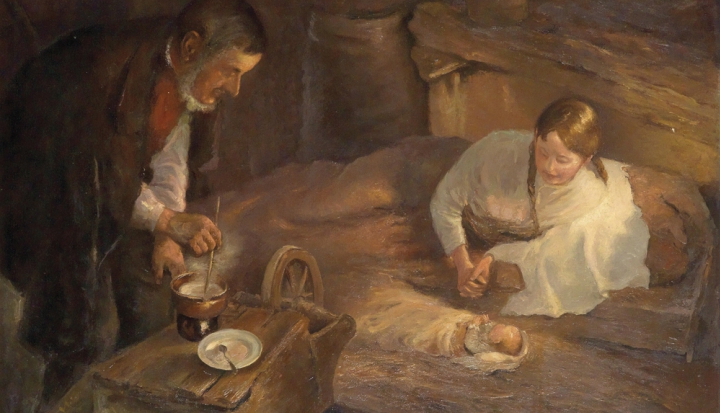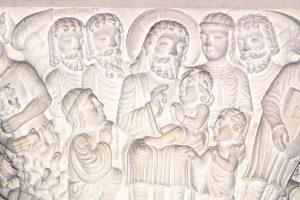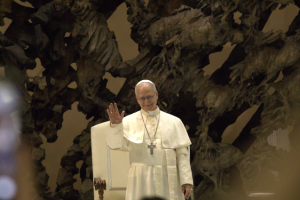Heavens! December! This means the Christmas countdown has been on for weeks or months, depending on which calendar you’re using. In Retail Time, of course, seasonal decorations have been on display since—oh, Halloween or so. However, if you observe the more traditional, liturgical sense of time, Advent began very conveniently this year on the first of the month.
While we may love the holiday season, it does present a burden of perceived obligation to many. Those who still send snail-mail cards face the long process of weeding through names and addresses to determine who’s in and who’s out of the annual greeting this time around. Some folks have disappeared from our lives since last year, address unknown. Some have died; address hopeful?
Perhaps, in a few cases, the relationship has become fretful. Do we risk an olive branch at this time of seasonally relaxed aggression? After all, even during the First World War a truce was declared for Christmas in 1914. If soldiers can put down their guns to observe a period of reconciliation, can’t we?
Next, of course, there’s the question of gifts. With whom are we willing to be reciprocal and with whom unilateral? What’s the cap on cost this year? And what’s the goal: to give people something they actually want or to give them something to express our affection or value of the relationship?
We may have to calculate the possibility of travel. Where do we intend to spend these weighty days at year’s end: with family or on the farthest side of the planet from them? Chances are if you haven’t bought those tickets yet, it’s too late to do so now.
The final calculation of December—after people, presents, and place—is how to manage our time. There will be parties, events that attract, and movies or shows that lure. Sales will be declared in every shop window as catalogs bulge out of the mailbox. Each website will demand our eyeballs immediately.
One thing’s sure: There won’t be time to do it all. We’ll have to make clear choices about who and what is deserving of our attention.
Maybe what needs to be addressed is the matter of time itself. What does Advent have to tell us about the use of our time?
Catholics count the start of the year with Advent, not January. This feels a little off-kilter, as secular time is so neatly defined with a fresh calendar on the wall, the decided flip of a new page. Advent is a subtler passage, less universal, less part of the public domain. We have no choice about the arrival of January. But we do make a choice in observing Advent. January is an external fact. Advent invites an internal shift in perspective.
What begins with Advent? The church year launches a new cycle of our sacred story. This heightens the awareness believers have that the coming of God in the flesh is a kind of reset for human history.
Christmas honors three arrivals of Jesus, theologians tell us: the past one 20 centuries ago in Bethlehem, the future one at the end of time, and the daily presence of Jesus in our lives. Once incarnate, Jesus never really evacuates the scene. “And remember, I am with you always, to the end of the age,” he promises at the conclusion of Matthew’s gospel (Matt. 28:20).
So Advent begins our retelling of an ancient story we’ve heard before yet plumbs it for the fresh significance it has at this moment in history and in our personal histories. God chooses to become flesh and live among us, right here, right now. What difference does that make? What a tragedy if our reply is: no difference at all.
Even for people of faith, Advent’s arrival may have no real significance apart from the secular hoopla of the holidays and the burdens of perceived obligation. Christmas may appear to be the “goal” of this month, with all events racing toward December 25 like white water into a deep chasm.
In the rush of the holiday river, we may be unable to discover the utility of a season designated for waiting, patience, and stillness. Who can stand still when the current of Christmas has such a strong undertow, knocking us off our feet and dragging us into the maw of the mother-of-all-celebrations?
All the more reason to stop. Be still. Breathe. And wait.
The truth is, time is always rushing somewhere. Scientifically, time is the measure of change—and change is relentless. If you’re not a fan of change, blame time. Then imagine a world without change: a frozen land bereft of growth, possibility, healing, and surprise.
That, in fact, is a fairly good definition of the past. But time flows forward, not backward. Consider how the ceaseless dynamic element of time may be a friend, not a foe. Even the very sick and very old have nothing to fear from it. Time solves everything. It brings an end to pain. It promises peace. We don’t talk about eternal rest for nothing. Sooner or later, time flows into the ocean of eternity. We learn, in that hour, how time is a mere tributary of something much, much more splendid.
Yet we may fear time because we fear the unknowable future. We crave the familiar and controllable—which is a hint to why the past, however unhappy, may have an irresistible appeal. We know what to expect from the past. It rarely throws us curveballs as the present moment most certainly can. The past may appear like a frozen masterpiece, a lost world we long to reinhabit. Or the past may seem like a frozen disaster—yet we survived it, and that’s no small thing.
Meanwhile, time hurtles forward. It demands we do something: finish a project, make a phone call, get supper on the table or in the bag, feed the baby, take a shower, keep an appointment. Time makes even greater and more inscrutable demands: forgive your parents, solve the Middle East crisis, decide the next presidency, save the planet. We might like time to shut up for five minutes, give us a break, just give us time to think.
And there is, truly, time for that. There’s all the time in the world to think. Pockets of thinking time don’t open up automatically, however, helpfully marked as such. We have to choose to step aside and stop, breathe, be still, wait. Traditionally, this behavior is called contemplation. That’s all it takes to be a contemplative, honestly. Recognize and practice the value of nondoing, nonachieving, nontumbling-through-activities time.
This is, in fact, the secret of Advent: embracing the invitation to become a contemplative.
Be like Mary, who ponders all things in her heart, her hands on her belly, waiting in joyful hope for God’s promises to come true. Be like Joseph, who pays attention to dreams, takes counsel from angels, and determines to offer his generous protection to a vulnerable woman and child.
Be like the prophet Isaiah, straining to see into the future, not staring listlessly into the past. Be like John the Baptist, living in the wild, listening to heaven, rejecting the pull of society’s so-called responsible behavior.
Be like shepherds on hillsides privy to celestial visitations or like magi, their eyes trained on the skies, waiting for heaven to speak.
’Tis the season for contemplation. If we don’t make time for stillness, we may miss the character of Advent completely.
This article also appears in the December 2019 issue of U.S. Catholic (Vol. 84, No. 12, pages 47–49). Click here to subscribe to the magazine.
Image: Unsplash cc via Markus Spiske














Add comment